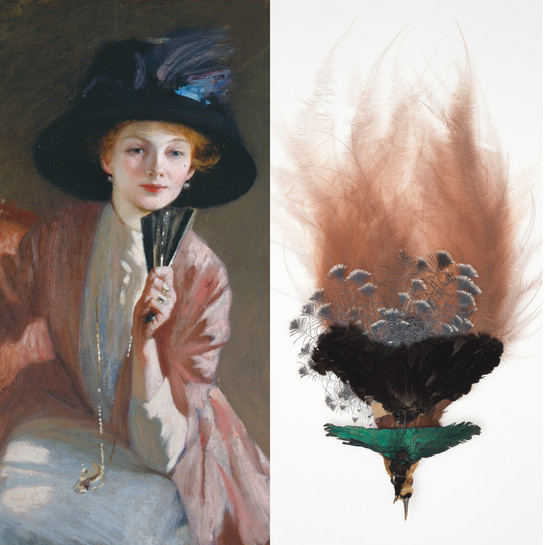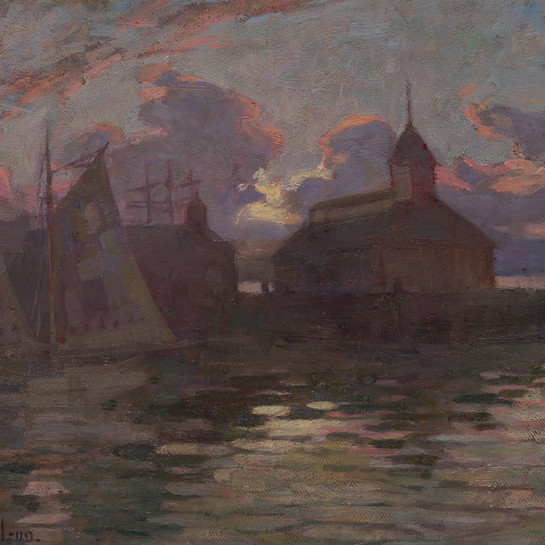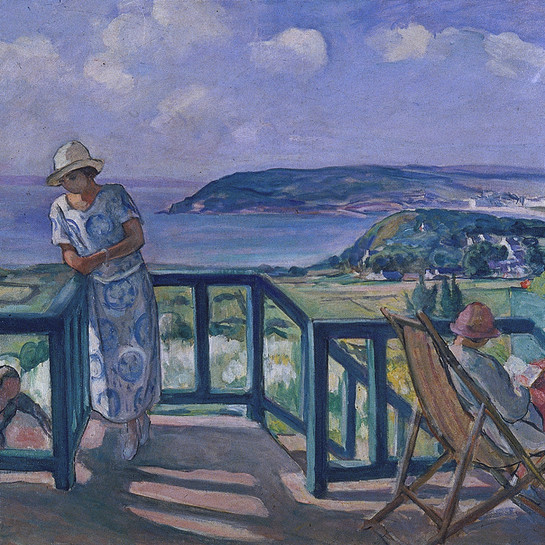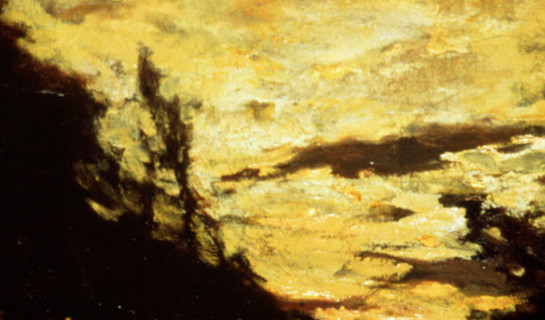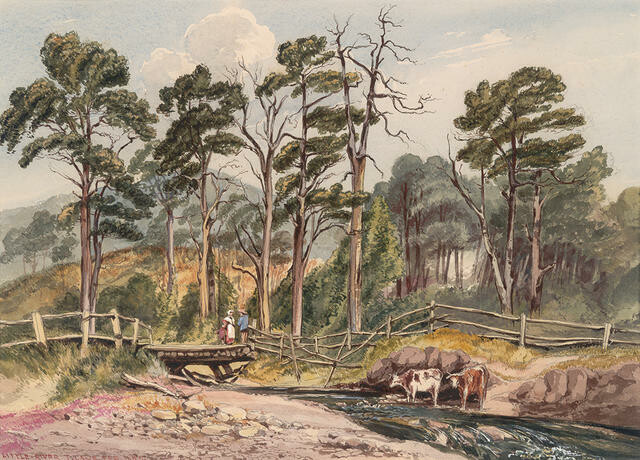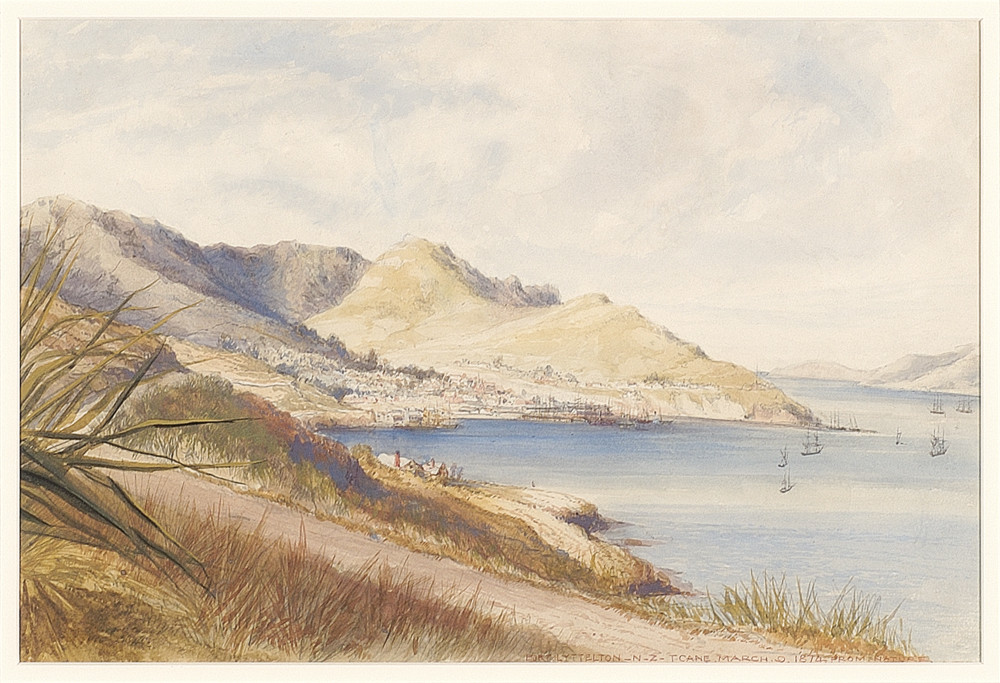Thomas Cane
Aotearoa New Zealand, b.1830, d.1905
Little River
- 1883
- Watercolour
- Gift of Miss Dorothy Williams, 1965
- 375 x 525mm
- 69/224
- View on google maps
Tags: animals, bridges (built works), hills, landscapes (representations), natural landscapes, people (agents), rivers, rock, trees
Large stands of giant tōtara once stood at Wairewa Little River on Horomaka Banks Peninsula. There was something of a boom in forestry at Wairewa during the 1860s and 1870s and most of this forest was felled; Thomas Cane’s watercolour of the region in 1883 hints at the transformation to pasture. The gaps in the forest expose the landscape beyond, while the shift to a pastural landscape is signalled by fences and cattle standing in the Ōkiri stream. This loss of habitat had a significant effect throughout Horomaka and led to a dramatic decline in the populations of native birds.
Ship Nails and Tail Feathers, 10 June – 22 October 2023
Exhibition History
This painting of Little River, on Banks Peninsula, was made at a time when stands of native bush still survived in the district, though large tracts were fast disappearing due to milling. Thomas Cane’s daughter and son-in-law lived in Akaroa. The Peninsula was a favourite painting location for him and he completed many watercolours of the area. Cane was an architect but he was also an enthusiastic spare time painter and exhibited regularly until 1900. Because of his training, Cane took meticulous care in his watercolour paintings. Like many, Little River is somewhat picturesque but shows a good sense of the region’s landscape. Cane was born in Brighton, England, and trained as an architect under Gilbert Scott. He arrived in Christchurch in 1874 and was Canterbury Provincial Architect from 1875 until the abolition of Provinces in 1876, when he went into private practice. Cane exhibited at the first Canterbury Society of Arts Annual exhibition in 1881 and continued to exhibit with the Society until 1900. (Label date unknown)
